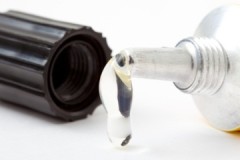Easy ways to remove adhesive from a sticker from plastic
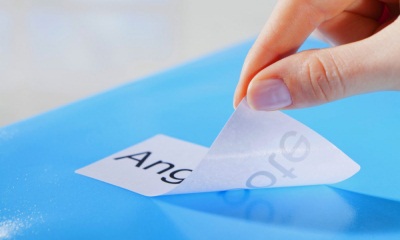 Stickers for children, shop labels and stickers from product manufacturers often leave a sticky mark on things when removed from the surface.
Stickers for children, shop labels and stickers from product manufacturers often leave a sticky mark on things when removed from the surface.
How to remove glue from plastic stickers? Time-tested homemade recipes and special products focused on removing labels and glue will help remove remaining sticky spots.
Content
How to wipe off the traces of the label?
The choice of a method for cleaning a plastic surface from any contamination should take into account all the features of the material.
Since there is a wide variety of types of plastic, it is necessary to test the reaction of the surface on an inconspicuous area before using even a seemingly safe cleaning method.
Oil (fat)
Vegetable oil will help to cope with the remnants of labels and stickers due to the property of softening the adhesive layer.
Application:
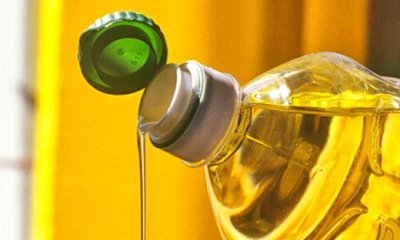 It is advisable to first remove the top paper layer of the label.
It is advisable to first remove the top paper layer of the label.- Apply the oil with a tissue or cotton swab to the affected area.
- Leave to act for a quarter of an hour.
- Clean off the softened adhesive with a scraper or other non-sharp object.
- Wash with a degreasing agent such as dishwashing liquid.
- Wipe dry with a cloth.
When applying oil, it is necessary to control that it does not spread over a large area and does not flow into the joints between individual parts.
Soap solution
The amount of soap solution depends on the area to be cleaned... For a large area, a bucket of warm water is taken and a package of liquid soap is diluted in it.
If there are unwashed areas, the process is repeated. For small stained areas, just pour a little detergent onto a wet sponge and rub the stains.
This method is one of the safest in terms of impact on plastic.
How to remove kerosene (gasoline)?
One of the options for cleaner from traces of stickers is kerosene. Gasoline and lighter refills will also work.
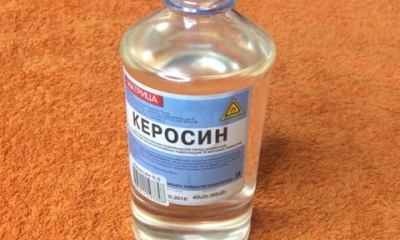 Application procedure:
Application procedure:
- moisten a napkin in the prepared product;
- apply the composition on the trail from the tape or stickers;
- leave for a couple of minutes;
- rub with a rag;
- clean with a spatula;
- wash with detergent.
Kerosene can react with some types of plastics, so preliminary testing is mandatory.
Acetone
Acetone will work best when the top layer of the label has already been removed... With a swab dipped in the preparation, the places with the remaining glue are well moistened. After holding for 10-15 minutes, clean the glue with a plastic spatula. At the end of cleaning, the plastic surface is washed.
Vinegar
Table vinegar can help remove glue residue quickly and easily. To do this, perform the following actions:
- The sponge is soaked in vinegar.
- Tinder the soiled place.
- Leave for a couple of minutes so that the acetic acid interacts with the adhesive base of the sticker.
- If the stain is not erased with a scraper and a washcloth, repeat the moistening with vinegar.
- The plastic is washed with water.
- Wipe dry.
Acetic acid can cloud some clear plastics.
Boiling water
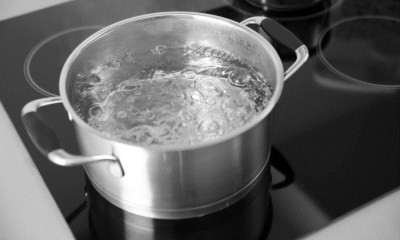 For removing stickers, the option with the effect of high temperature on the adhesive base of the sticker is suitable. An example of such an application is boiling water.
For removing stickers, the option with the effect of high temperature on the adhesive base of the sticker is suitable. An example of such an application is boiling water.
In order to soften the adhesive base of the former sticker, very hot water is poured onto it. The adhesive layer becomes viscous and pliable from this.... In this state, it will be easy to clean it off.
The use of high temperature is only possible with heat-resistant plastic.
Hair dryer
On a household hair dryer, set the regulator to the hot air supply mode. Guide the socket into place with the glue spot. The high temperature will begin to melt the adhesive part, which makes it easy to remove without applying force.
Cleaning agent
Household cleaners (gels, sprays, etc.) can also be used to remove stickers. When choosing a product, keep in mind that some granular cleaning products are abrasive and can cause scratches.
When choosing a household chemical for processing, you must first study the instructions for it, paying attention to which surfaces it is intended for cleaning, and whether there is plastic in the list.
Soda
Baking soda should only be used to clean rough plastic surfaces. Otherwise, scratches may remain after cleaning.
The order of work:
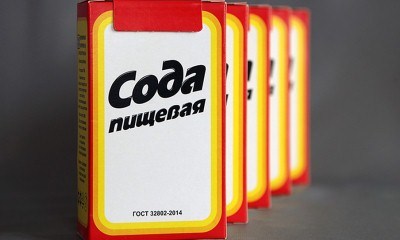 ½ cup of soda is poured into a prepared flat-shaped container;
½ cup of soda is poured into a prepared flat-shaped container;- add enough water to form a thick slurry;
- pour in 1 tbsp. l. dishwashing detergents;
- stir the composition;
- applied in a circular motion to the glue line with a sponge;
- after rubbing in the composition, it is left on the surface for several minutes;
- rubbing with a washcloth;
- washed off with water;
- wipe with a dry cloth.
Even with respect to plastic that is resistant to mild mechanical stress, intense friction with soda is best avoided.
Stationery eraser
Moisten the glue mark with water before using the eraser. and leave for 15 minutes to soften.
This method eliminates adhesive traces without damaging the surface.
How can you remove residues and clean the plastic?
In addition to home remedies, special remedies can help. They are compactly packaged to keep the sticker remover close at hand and are effective.
Since plastic is a demanding material for cleaning conditions, before buying a new product, it is recommended to study the instructions and clarify whether the drug can be used on plastic.
HG
The product is available in liquid form.The volume of the package is 0.3 liters, the cost is about 500 rubles. In the composition - up to 15% of nonionic surfactants.
Application procedure:
- Apply to glue or sticker.
- Leave on for 5 minutes.
- Rub with a brush.
- If cleaning does not help at once, repeat again.
Application advantages:
- efficiency;
- Ease of use.
Disadvantage:
- persistent unpleasant odor;
- price.
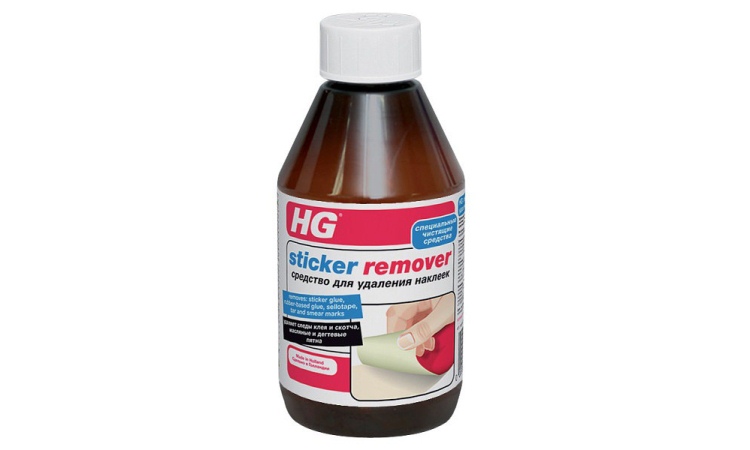
Glutoclean
A product made in Germany is designed to remove stickers from various surfaces, including plastic. The price of 500 ml is about 600 rubles. The composition contains nonionic surfactants (5%).
Application:
- Moisten a cloth with Glutoclean.
- Moisten the remaining marks on the stickers.
- Leave on for 1-2 minutes.
- Rub with a brush.
- Rinse.
- Wipe up.
Application advantages:
- respect for the surface to be cleaned;
- high efficiency;
- ease of use.
Minuses:
- not a small cost;
- not in all cases the packaging is convenient;
- repeated exposure may be necessary.
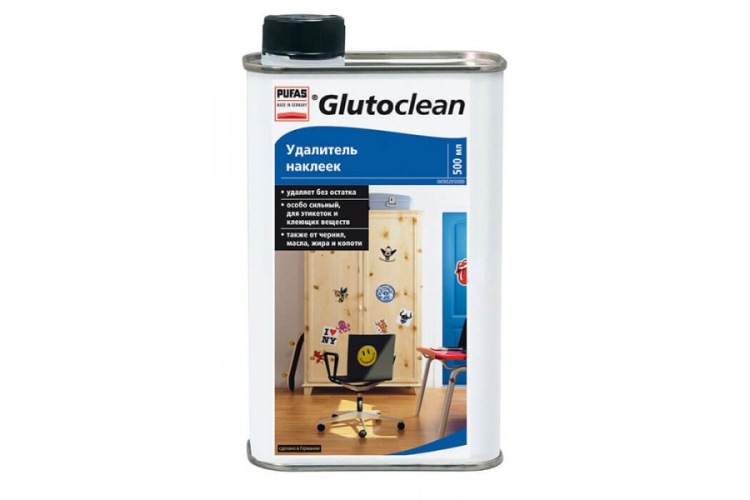
KUDO
The product is manufactured in Russia, has a 0.4 liter aerosol can, suitable for use on glass, plastic, ceramics and other surfaces.
This product has many advantages:
- good removal of traces of glue, including old ones;
- ease of use;
- economical consumption;
- affordable cost.
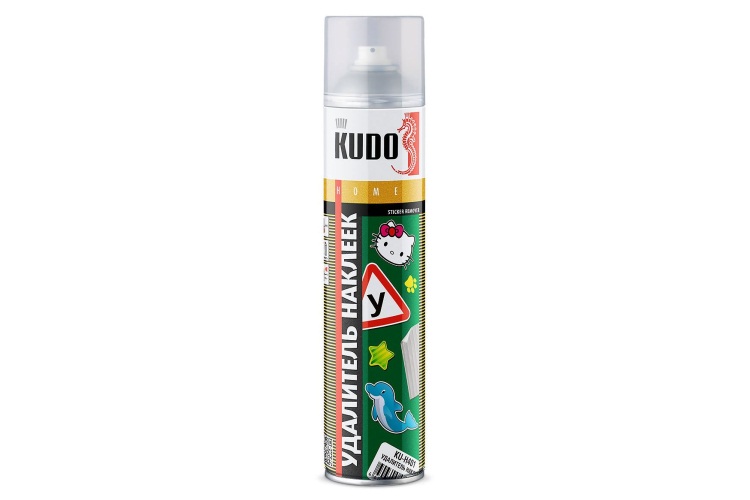
8 useful tips
Cleaning plastic surfaces should take into account the following points:
- Plastic does not allow the use of sharp objects (knife, blade, scalpel) for cleaning, as they leave behind scratches.
- If the plastic is painted with paint, then removing the sticker can lead to the removal of the paint layer. Therefore, it is advisable to start cleaning with gentle methods.
- The use of melamine sponges for cleaning surfaces that come in contact with food is prohibited.
- It is recommended to work with the solvent with protective gloves and in a ventilated area.
- Exposure to high temperatures is permissible only for heat-resistant plastic.
- Glue softened under the action of any of the solvents should be tried to be collected and removed from the surface immediately, avoiding smearing over a large area.
- Where home remedies did not cope with the task, you can try using special ones.
- If a sticky layer remains after removing the sticker, it is advisable to try to remove it immediately. Otherwise, dust and other contaminants will adhere to it, which will be much more difficult to remove.
Useful information on removing adhesive traces from plastic surfaces - here.
Related videos
How to remove the remnants of the adhesive from the sticker from the plastic without the use of chemicals, the video will tell you:
Conclusion
Using special products and simple homemade recipes, even old or poorly peeled labels can be removed from plastic, leaving a sticky layer behind.
To please the result, you can use several recipes in turn.... In this case, cleaning should not be accompanied by the application of effort and include the impact of sharp objects.

